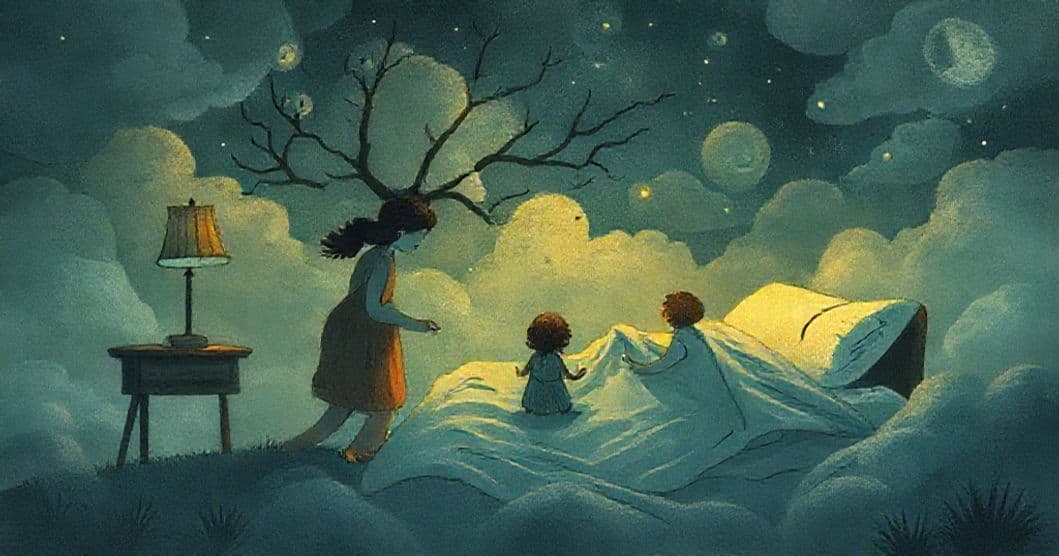PART 1: PATIENT'S DREAM REPORT
In a recent session, a patient shared the following dream:
I awoke with a gasp, heart hammering against my ribs, as if I’d just escaped a physical threat rather than a dream. The remnants of the nightmare still clung to my consciousness like damp clothes—heavy, disorienting, and deeply unsettling. In the dream, I found myself standing in my family’s kitchen at dawn, the same worn linoleum tiles underfoot, the same cluttered countertop where my father always left his tools. But this time, the roles were reversed. My father, who typically left the cooking to me (his culinary talents limited to burnt toast and lukewarm cereal), was seated at the table, stirring a pot with deliberate, almost ritualistic movements. His posture was relaxed, almost… expectant. As I registered this oddity, I became acutely aware of the clothes I wore: an oversized flannel shirt that belonged to him, its sleeves trailing on the floor, and baggy work pants that swallowed my legs. The fabric felt both foreign and oppressive, like wearing a costume that didn’t quite fit, yet was somehow mine by force of circumstance.
We sat together at the table, the smell of burnt coffee and something metallic (maybe burnt toast?) filling the air. My father spoke, his voice calm but with an undercurrent of urgency: “Eat quickly—your mother’s coming over.” The phrase hung in the stillness, and I felt a cold knot form in my stomach. Then, without warning, my mother appeared in the doorway. She looked… wrong. Her smile was too wide, her eyes too bright, and her movements lacked the fluidity I knew so well. She didn’t speak; she just stood there, a living mannequin of maternal warmth that had lost its soul. I knew, in that dream moment, that something was fundamentally off—not just about her appearance, but about the entire scene. I tried to rise, to bolt, but my father’s clothes tangled around my feet. Each step forward sent me staggering, tripping over the excess fabric like a child in oversized shoes.
Want a More Personalized Interpretation?
Get your own AI-powered dream analysis tailored specifically to your dream
🔮Try Dream Analysis FreePanic clawed at my throat as I screamed for help, but my father remained seated, his back rigid, his gaze fixed on the stove. The silence between us felt thick, impenetrable. My mother’s presence, once a source of comfort, now radiated danger. I woke up in a cold sweat, heart pounding, and I swear I could still taste the metallic aftertaste of the dream’s false breakfast. That’s when I heard my father’s footsteps outside my door, rushing in with a concerned expression. But the terror of the dream lingered, a physical weight on my chest as I struggled to catch my breath.
PART 2: CLINICAL ANALYSIS
SYMBOLIC ANALYSIS
The dream’s core symbols reveal deep-seated anxieties about identity, family roles, and emotional safety. The oversized clothing worn by the dreamer is a powerful symbol of role confusion and burdened expectations. Clothing in dreams often represents how we present ourselves to the world, and oversized garments here suggest the dreamer is unconsciously taking on responsibilities that don’t fit their true self—like a child forced into adult clothes. This aligns with Jung’s concept of the shadow archetype, where we unconsciously absorb roles that don’t authentically belong to us.
The
